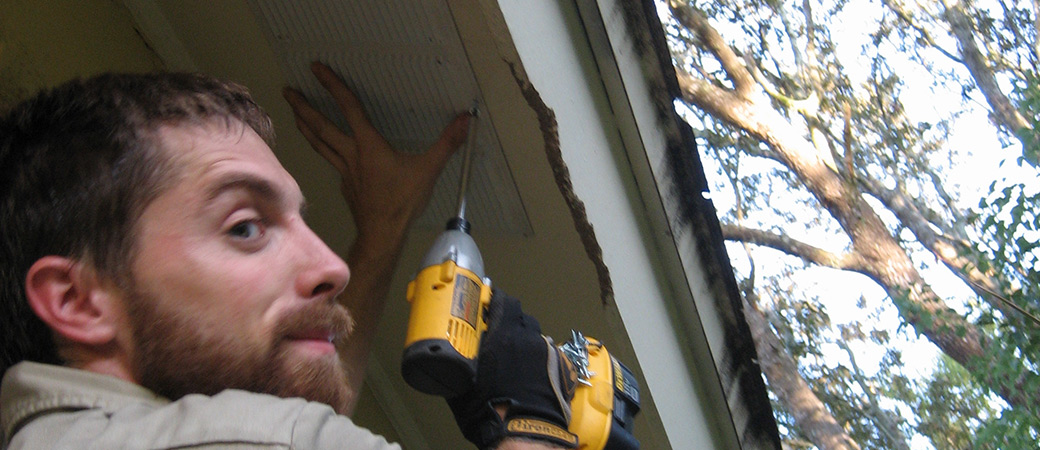Do-It-Yourself: How to Critter-Proof Your House
There’s a lot that goes into critter-proofing a house, and I will begin by saying that my best advice here is hiring a wildlife professional, or at least contacting one for a consultation. All sorts of audio, visual, or odor repellents are not efficient proofing methods, nor will they force critters that have already settled in to leave the area. This being said, there are two big principles that go with keeping wildlife away from your property, and I’m going to discuss both of them in what follows.

No access to food
A critter-proof house is a house where wildlife can’t access food with ease, or better yet, at all. The biggest and most common food sources that attract pest animals to and in our homes are garbage and pet food. Keeping garbage cans clean, indoors, and locked often makes the difference between an animal just passing through and never returning, and an animal invading your house. Pet food and farm animal food should not be stored outside, or left outside after the animals are done eating. Leaving pet food outside overnight may not only transform that area of your property into a feeding station for wildlife, or invite wildlife to set permanent shop on your property, but can also be dangerous to the actual animals you want to feed, as they can get into fights over food and territory with the wildlife at hand, and even contract diseases if they’re not vaccinated. Leftover pet or livestock food shouldn’t be left outside not even during the day, as not all nuisance wildlife are nocturnal. And even if you are dealing only with nocturnal critters, don’t underestimate their sense of smell – raccoons will often come to inspect the exact spot where pet food was available during the day. Fish ponds should be secured with nets, as should fresh sod, and birdfeeders should be properly secured against squirrels, raccoons, rats and mice.
No access to shelter
Professional home repair if of the uppermost importance when wanting to critter-proof your house. And this usually means having a professional inspect your home and handle all the required repairs. If you’re a fan of DIY projects, or if you have any other reasons why you wouldn’t want this handled by a pro, make sure you properly educate yourself on the subject before embarking on what may prove to be a set of increasingly onerous tasks. It’s another discussion if you do have experience in home repair, and if you do know your way around this type of work, but that’s not usually the case with your typical homeowner. Against this background, here’s what you need to pay attention to if you want to successfully keep wildlife at bay.
Fences
If you have open space between your deck or porch and the ground, you need to install a strong steel mesh exclusion barrier around said deck or porch. The barrier needs to be carefully bolted in, and installed at least one foot deep into the ground with the steel mesh curved at the bottom so that animals can’t make their way in by digging beneath the barrier. The openings in the mesh need to be small enough, as not only medium and large animals will want to access that area for nesting purposes, but snakes may also be attracted there for cool and dark shelter, and rats and mice will often try to make their way into your living space or attic at foundation level. In order to install the exclusion barrier, you will first have to dig a trench around the area that needs fencing, and then cover it up once the barrier is installed. If you’re worried about your vegetable garden being attacked, a deep, tall, solid – maybe even electric – fence should do the trick.
Flashings and screenings
Steel flashings and steel screens securely bolted in with a power drill should be covering any holes in the exterior walls, cracks and crevices in the soffit, open or poorly covered vents – basically, anywhere there’s a possible animal entryway, that opening needs to be covered or filled in, depending on location and size. Quality material is essential, and not even the tiniest fissure should be omitted – you’d be amazed how little space a bat or a small snake needs in order to get inside your house. The exhaust vents in your bathroom and kitchen need to be covered with steel screenings, if rats or mice entering the home is a concern. Metal flashings or bird control spikes should be installed on rooftop edges, on window sills, or on chimneys, if roosting birds are your problem. And if you’re worried about chimney denizens, you should equip the chimney with a metal cap.
And there you have it, now you can live in a critter-proof house. If you’ve already done all that needs to be done in order to critter-proof your home, and you still have a wildlife problem on your property, it’s clear that there’s still something there that attracts them. In this scenario, you will need to further proceed in identifying what that thing is, and eliminate the source of attraction and/or continue with thorough habitat modification. Turning to the services of a wildlife professional will always be the best idea, even if it is just your last attempt at solving the problem.

